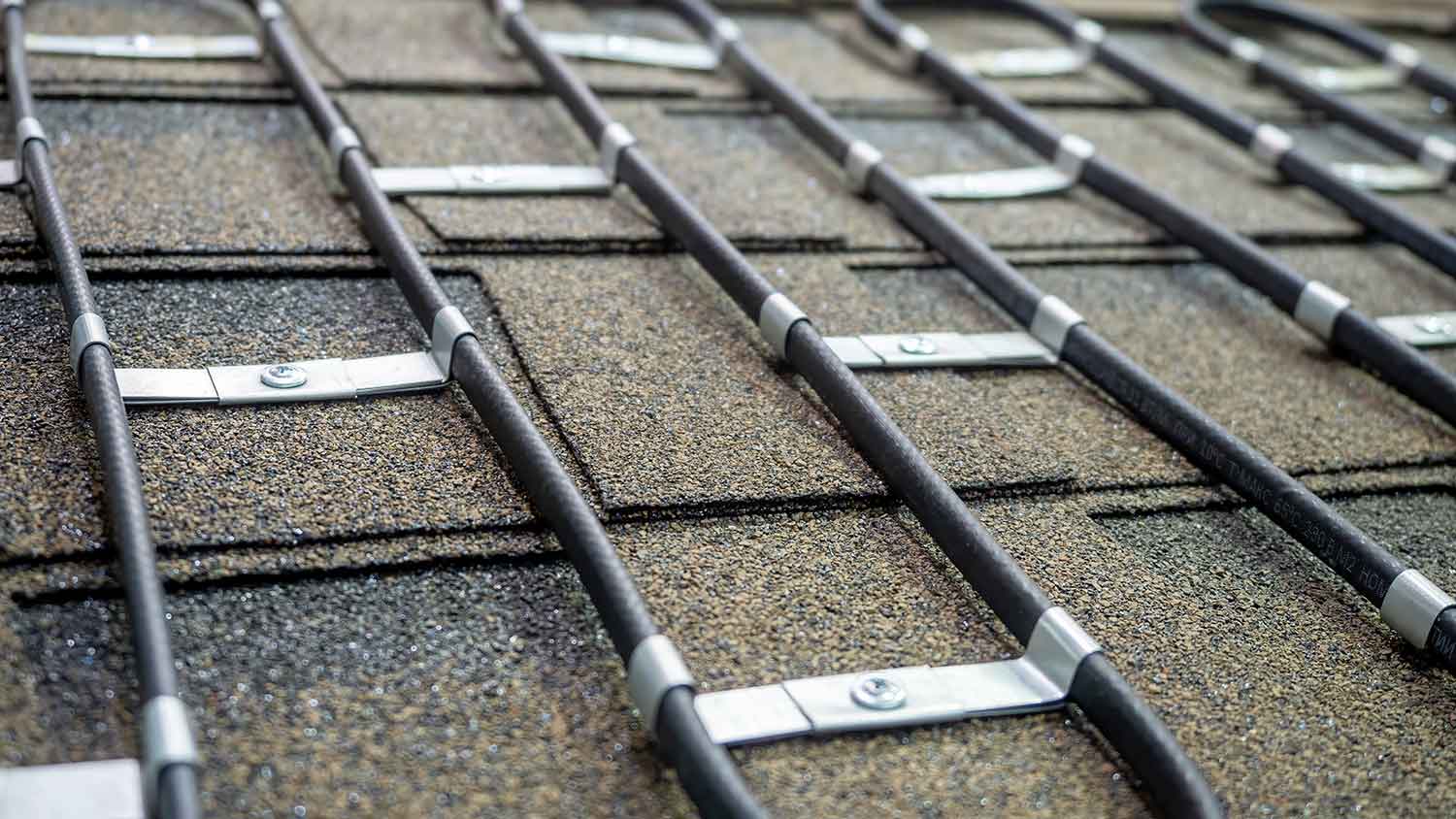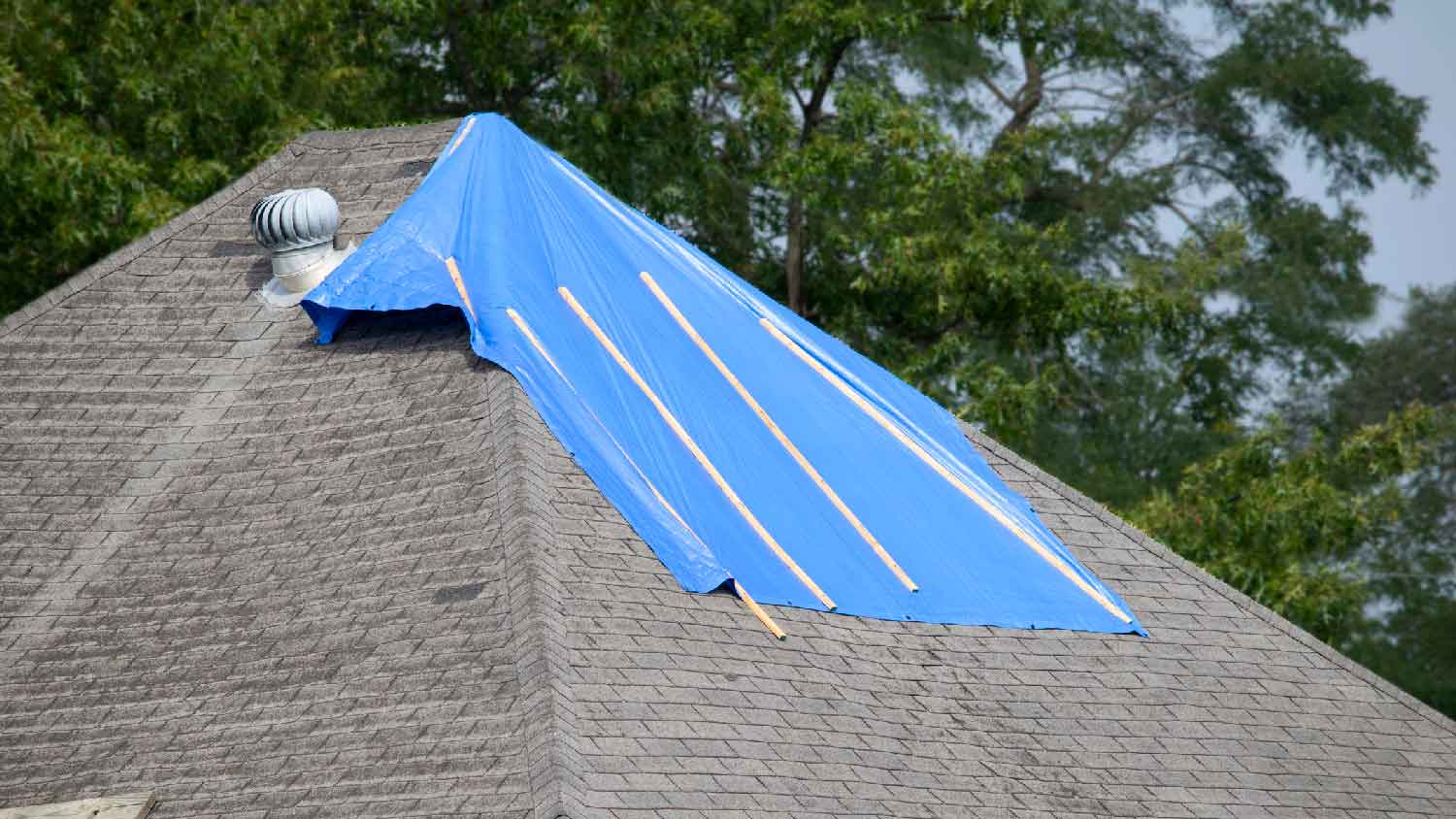
Our comprehensive cost guide will help you explore the costs associated with roof replacement, including roof pitch, shape, design, square footage, and more.
A licensed roofer installs roof heat cables safely and correctly


Roof heat cables warm roof edges, gutters, and downspouts to prevent ice dams that force water under shingles.
Key cost drivers include roofline length, eaves and downspout coverage, and the type of heat cable selected.
Benefits include reduced ice buildup, better drainage, and protection against roof leaks and interior water damage.
Tip: Choose self-regulating or manual cables carefully and confirm safe, correct installation to avoid fire or roof damage.
This article was created using automation technology and thoroughly fact-checked and edited by HomeAdvisor Editor Ryan Noonan.
If you are asking who installs roof heat cables, the answer is a local roofer with the training to work safely at height and around electricity. Roofers handle correct installation on roof edges, gutters, and downspouts to prevent ice dams and drainage issues.
Professional roofers are licensed and insured for jobsite accidents, which helps protect you. A handyperson may not carry equivalent coverage. For safety-critical work, rely on a roofer hiring guide approach.
Hiring a roofer ensures safe, correct installation and reduces your risk of falls. Roofers choose appropriate products and attach cables to shingles, gutters, and downspouts to help avoid fire hazards and property damage. Properly installed cables prevent refreezing at roof edges so meltwater drains instead of backing up and leaking indoors.
Works safely on ladders and rooftops
Minimizes your personal fall risk
Selects appropriate, safe cable products
Installs to reduce fire risk
Attaches clips without shingle damage
Routes cables to prevent ice dams
Keeps gutters and downspouts clear
Measures roofline, eaves, downspouts precisely
Tests operation before winter use
Licensed and insured for accidents
A handyperson may be able to install roof heat cables, but confirm liability for falls or ladder injuries before proceeding. Professional roofers are licensed and insured for on-the-job accidents, while a handyperson may not be. For safety-sensitive work at height and around electrical components, hire a roofer. Choose a handyperson only if you fully understand the risks and coverage.
Pros include potential availability and ability to complete basic installations, while cons are liability concerns and possible lack of insurance for ladder work. Any safety, electrical, or complex roofline scenarios. If you want to ensure the job is done safely and correctly, you might want to consider hiring roofing services near you.
A roofer follows a measured, safety-first process to keep water moving and prevent refreezing at the eaves.
Measure roofline, eaves, and downspouts to determine cable length
Start at an outdoor outlet and route the cable to the roof overhang
Clip the cable to a shingle at the edge
Zigzag the cable along the roof edge and partially into the gutter
Run the cable through gutters and downspouts for drainage
Plug in to test, then unplug until needed
Safe attachment prevents shingle and gutter damage. Correct zigzag spacing and routing help stop refreezing that creates ice dams. Product choice matters: self-regulating cables adjust output with temperature, while manual cables provide steady heat when switched on. Testing before the snow season confirms everything works when cold weather arrives.
Hiring a professional root heat cable installer costs between $800 and $15,000 on average, depending on the size of the roof and the type of heat cables you choose. Difficult to access roofs or extensive installations can increase the price. The professional’s experience and location also factor into costs. Always request a detailed estimate that includes labor, materials, and disposal fees to avoid unexpected expenses.
From average costs to expert advice, get all the answers you need to get your job done.

Our comprehensive cost guide will help you explore the costs associated with roof replacement, including roof pitch, shape, design, square footage, and more.

Discover how much TPO roofing costs to install based on factors such as size, labor rates, installation method, and insulation choice.

Stay on top of your budget by evaluating tin roof cost factors, including roof size, type, and additional features like sealing and flashing.

Wondering who can tarp my roof? Learn whether to call an emergency roofing company or a standard roofer, plus response times and safety tips—get guidance now.

Wondering who repairs soffit and fascia? Find who to call—roofers, carpenters, or gutter pros—and get smart hiring tips to protect your roof.

How much roofing calculator will your project require? Get answers with this roofing area and shingle calculator tool.